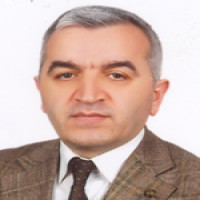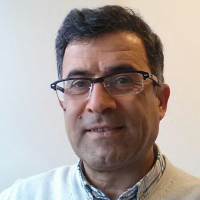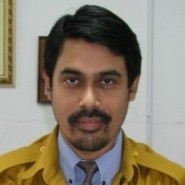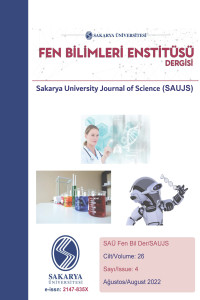Sakarya University Journal of Science (SAUJS) aims to share scientific studies conducted in the fields of science, engineering, and architecture with national and international scientists and the public. Original research articles and review articles in science, engineering, and architecture disciplines are accepted in the journal. Original research articles are expected to contain theoretical and experimental results and should not be published in other journals. The review articles expect that scientific, technological, and current developments in a particular subject are reflected using a comprehensive bibliography, and a satisfactory evaluation is made.
The research topics or fields covered by SAUJS are listed below (Topics generally include but are not limited to): Computer Engineering, Electrical and Electronics Engineering, Mechanical and Energy Engineering, Industrial Engineering, Civil Engineering, Environmental Engineering, Architecture, Metallurgy and Materials Engineering, Physics, Chemistry, Mathematics, Biology, Nanoscience and Nanotechnology, Agricultural Engineering and Food Engineering.
Submission Checklist
As part of the submission process, author(s) must check that their submissions comply with all of the following conditions, and submissions that do not comply with these guidelines may be returned to the author(s). In addition, all author(s) submitting an article must have an Open Researcher and Contributor Identity (ORCID) number associated with their affiliation account and register this number to the journal system.
The manuscript should include the article title, abstract, keywords; introduction, materials and methods, results, discussion; thanks; funding information, conflict of interest statement; author(s) contribution, ethics committee approval statement, research and publication ethics statement, references; supplementary materials (if any). Author information should not be included in this file. Document properties should be anonymized (The person who wrote the document should not be obvious. The Remove All options should be selected in the window that opens by saying File-Check for Problems-Inspect Document in your word document.)
You can use the below list to finalize your submission before submitting it to the journal for review. Please check the relevant section of this Authors' Guide for more details.
1. Is the article file name the same as the article title or the abbreviated article title?
2. Is the article file prepared under the template on the web page of our journal? (
Sample article file)
3. Has the author information in the article been deleted?
4. If there is any other information in the article file that may suggest the author’s name, has this information been deleted?
Except for the Author Contribution Form and Conflict of Interest/Common Interest Statement, the above forms must be uploaded by all the author(s) or signed by the corresponding author only. The author contribution form and the Conflict of Interest/Common Interest Statement must be signed by all author(s).
All forms must be signed, scanned, and uploaded as PDF file to the journal system.
Manuscript should be submitted as Word file.
It is sufficient to submit only the English version of the forms written in both languages. Turkish forms are for informational purposes only.
Submission Declaration
Submission of an article means that the work has not been published before, is not considered for publication elsewhere, its publication has been expressly approved by all the author(s) and the responsible authorities in the place where the work was done, in the same form without the written consent of the copyright holder, if accepted, it warrants that it will not be published elsewhere, including electronically in English or any other language. Your article can be checked by the authenticity detection service Ithenticate similarity check to verify authenticity.
Use of Inclusive Language
Inclusive language accepts diversity, respects all people, is sensitive to differences and promotes equal opportunities. Content should not make any assumptions about the beliefs or commitments of any reader; contain nothing that could imply one individual's superiority over another based on age, gender, race, ethnicity, culture, disability or health condition, and use inclusive language throughout. Authors should ensure that the manuscript is free of bias, stereotypes, slang, dominant culture references, and/or cultural assumptions. Unless relevant and applicable, we recommend that you avoid using identifiers that refer to personal characteristics such as age, gender, race, ethnicity, culture, disability, or health status. These guidelines are provided as a reference point to help determine appropriate language but are by no means exhaustive or definitive.
Changes to Authorship
Authors are expected to carefully review the list and order of author(s) before submitting their manuscript and provide the definitive list of authors at the time of original submission. Any addition, deletion, or rearrangement of author names in the list of authors should be made only before the article is accepted and only if approved by the journal Editor. To request such a change, the Editor must obtain from the corresponding author the following: (a) the reason for the change in the list of authors, and (b) written confirmation (email, letter) from all author(s) that they agree to include, remove or re-edit the list of authors. In the case of adding or removing author(s), this needs confirmation of the added or removed author.
The editor will consider adding, deleting or rearranging the author(s) after the article has been accepted, in only exceptional cases. While the editor is evaluating the request, the article’s publication will be stopped. If the article has been previously published in an online issue, requests approved by the Editor will result in a correction.
Language
The text should be free of spelling and grammatical errors and written in good English.
Submission of Articles
Our online submission system guides you step-by-step through the process of entering your article details and uploading your files. Editable files are required to string your article for final publication. All correspondence, including notification of the editorial decision and revision requests, is sent by e-mail.
To submit your articles to SAUJS
https://dergipark.org.tr/tr/journal/1115/submission/step/manuscript/new.
Referee Suggestion
Potential referee(s) may be suggested to evaluate the submitted article. Names and institutional email information of proposed referees should be provided. Referees at the same institution or have co-authored or collaborated in the past three years should not be recommended. In addition, potential referees from different countries/regions may be recommended to evaluate the study objectively and to ensure scientific rigor. The editor decides whether to invite the suggested referees or not. Editors do not invite referees who have a potential conflict of interest or common interest with the author(s).
Formatting Requirements
There are no strict formatting requirements, but all articles should contain the essential elements needed to convey your article. The article should be divided into sections with different main headings and each section heading should be numbered. Section titles should be written in Bold Font. Numbering should start from 1 for the main sections. All main headings (except Abstract, Acknowledgments and References) should continue as 2., 3., .... Secondary headings should continue as 1.1., 1.2., 1.3., etc in accordance with the main section numbering. The first letters of the words for the second headings must begin with a capital letter. The third headings should continue as 1.1.1., 1.1.2., 1.1.3., ... in accordance with the second headings. Only the first letter of the first word for the third heading should be capitalized. In addition, supplementary materials (if any), acknowledgments, funding information, conflict of interest/common interest statement, author(s) contribution, ethics committee approval statement, research and publication ethics statement should be added after the bibliography.
Referee Evaluation
The editor will first evaluate all studies in terms of suitability for the journal. Applicable articles are usually sent to at least two independent expert referees to assess the article’s scientific quality. The Editor is responsible for the final decision regarding the acceptance or rejection of the articles. The editor's decision is firm. Editors are not involved in decisions about articles written by them or their family members or close associates or related to products or services that the editor is interested in. Any such submission is subject to all of the journal's usual procedures and is peer-reviewed independently of the relevant editor and research groups.
ARTICLE STRUCTURE
Please read the spelling rules first. Research articles to be published in SAUJS should not be longer than 20 pages, including references, appendices, figures, and tables, and review articles should not be longer than 30 pages. Tables and figures should be added directly to the article near where they are cited. Both tables and figures should be numbered sequentially. Tables and Figures should not be renumbered for each section in the article. The article should be written in Microsoft Word. It is important that authors follow the instructions.
You can find more details and suggestions on formatting an article in the author guide below, presented in a typical article style.
This document is adapted from previous style guides used for “Sakarya University Journal of Science (SAUJS)”. Please write your articles using this style guide.
Page Limit
Research articles to be published in SAUJS should not be longer than 20 pages, including references, appendices, figures, and tables, and review articles should not be longer than 30 pages. The abstract should not exceed 300 words.
Spelling and Grammar
Please check your document for spelling and grammar before submitting it.
Page Margins
The first page containing the Title and Abstract should be 5 cm from the top and 2.5 cm from the bottom, left and right. Left and right margins for other pages should be 1.5 cm and others 2.5 cm, and the text should be justify to both sides. This guide is a sample file for all these requirements. It is recommended that you hyphenate words to achieve more even word spacing.
Line Spacing
The article’s main text should be single-spaced and fully justified in 12-point Times New Roman font. Do not leave a single line space between paragraphs, and do not indent the first line of a new paragraph. Use a space after punctuation marks such as periods, commas, semicolons, and colons. Do not use spaces after dots in abbreviations (for example, i.e., etc., U.S.).
Titles
For the main headings, 12 point Times New Roman bold font, all letters should be capitalized and centered. Use 12 pt line before the main headings and 18 pt line after the main headings. For second headings, use 12-point Times New Roman font and capitalize the first letter of the first word. For third headings, use 12-point Times New Roman font, and only the first letter of the first word should be capitalized.
Header/Footer
Please do not put headers or footers in your article.
Title Page Information
• Title of the Article
Do not use a separate title page. For the title of the article, use 14-point Times New Roman bold font with only the first letter of each word (excluding the conjunctions) capitalized and centered.
• Authors
Do not write any information about the author(s) at this stage. Author information will be requested after your submission is accepted for publication.
• Abstract
No more than 300 words should be used in the abstract to indicate the nature of the subject and briefly explain the article’s findings. A summary is usually presented separately from the article, so it should be understandable. References should not be used in the abstract. In addition, non-standard or uncommon abbreviations should be avoided. If necessary, they should be defined where they are first mentioned in abstract.
• Keywords
No more than five keywords should be written immediately after the abstract. Only abbreviations that are strictly defined in the related field may be used. Keywords will be used for indexing purposes. Keywords are recommended to be chosen from the Science Terms of Turkey (http://www.bilimterimleri.com).
Article Structure
The body of the article should be separated from the abstract by two-line spaces. The "body text" style used here is a justified 12-point Times New Roman font. Single line spacing (12 points) should be left between paragraphs. The first word of a new paragraph should not be indented.
Footnotes, Figures and Tables
• Footnotes
Footnotes are not recommended, but can be used when necessary. They should be numbered consecutively and placed at the bottom of the page on which they appear, separated from the body of the text by a line 25 mm. A line spacing should separate two footnotes on the same page. Make sure you follow the margin requirements at the bottom of the page. Footnotes should not be added to the equations.
• Figures and Tables
11-point Times New Roman font should be used for figure and table captions. Figures and tables should be placed immediately after the first citation in the text and should be placed so that they can be easily referenced while reading the text.
Figure captions should be placed under the figure, centered and not bold; no dots should be left after the figure number or at the end of the line.
Table headings should be placed at the top of the table, centered and not bold, no dots should be left after the table number or at the end of the line. The first line of the table should include explanations.
For both table and figure captions, only the first letter of the first word should be capitalized unless a word necessarily needs to be capitalized. Bold fonts should not be used. Dots should not be used after table and figure numbers and at the end of lines. Tables should be centered across the entire page if possible. Entries in the cells of the table should be left justified. The font used for cell entries is left to the discretion of the author. In general, it is recommended to minimize the number of vertical lines and use only horizontal lines whenever possible.
In the tables that continue on the next page, the phrase (continue) should be added in parentheses after the table title. Explanations should be included in the first line of the continued tables.
Reference Citations
Please use the IEEE Reference to format your references: https://www.ieee.org/documents/ieeecitationref.pdf
Please align your references to the left and do not use IEEE preferred hanging indents. Books, journals, and other references should be consecutively numbered in the main document text.
Formulas
Please write math equations as editable text, not as images. All formulas should be aligned, and numbered sequentially on separate lines. All symbols must be adequately defined. Identification numbers should be written on the right side of the formula. Simple formulas should be presented in line with standard text whenever possible, and small fractional terms should use a “/” instead of a horizontal line (for example, X/Y).
Supplementary File
If a supplementary file is required in the study, it should follow the article’s main text and come before the references. All accompanying tables and figures should be mentioned in the text. Table and figure numbers presented should be used as “Table S1” and “Figure S1” in the supplementary file.
After the annexes, other statements should be written in the following order.
Acknowledgments
If it is desired to thank any person who contributed to the study, this should be written under "Acknowledgments" before the references.
Funding
It is necessary to indicate the sources providing financial support for the conduct of the research and/or the preparation of the article. If the funding source(s) does not have such involvement, it is also recommended to indicate this.
Full details of funding sources should be included under the FUNDING heading as follows:
This study is supported by Sakarya University Scientific Research Projects Coordination Unit. Project Number: 2016-01-02-001.
If support is not received, under this heading "Author(s) have received no financial support for the research, authorship or publication of this work." statement must be written.
The Declaration of Conflict of Interest/ Common Interest
Corresponding author(s) must disclose, on behalf of all author(s) of an article, any financial and personal relationships with other individuals or organizations that may improperly influence their work. Examples of potential conflicts of interest can be personal, business, political, academic or financial. All author(s), including those who have no interests to declare (who may state that they have nothing to declare), should provide relevant information to the corresponding author. For example;
In accordance with conflict of interest policy and my ethical obligation as a researcher, I declare that ……… [company, institution, person] may be affected by the research reported in the accompanying document. I have fully disclosed this conflict of interest situation to the journal and I have an approved plan for managing potential conflicts."
If no conflict of interest situation is disclosed, we will add the following statement to your article at the time of publication: "No potential conflict of interest was declared by the authors".
Author Contributions
For transparency, the author(s) are expected to submit an author statement file summarizing the respective author(s) individual contributions to the article. Under this heading, "Authors contributed equally to the study" or "1st author contributed 60%, 2nd author contributed 40%." statements may be presented.
The Declaration of Ethics Committee Approval
If the study requires ethical committee permission, the committee’s name, the date and the number of the approval should be stated under this heading. In addition, information about the permission should be included in the METHOD section. A copy of the permission obtained should be uploaded as an ETHICS COMMITTEE APPROVAL DOCUMENT at the article submission stage.
If the study does not require ethics committee approval, the statement "This study does not require ethics committee approval or any special permission" should be included under this heading. In addition, the ETHICS COMMITTEE PERMISSION IS NOT NEEDED DECLARATION FORM must be signed by the corresponding author and uploaded instead of the ETHICS COMMITTEE APPROVAL CERTIFICATE that will be requested at the stage of article submission.
The Declaration of Research and Publication Ethics
Under this title, the author(s) states, "In the writing process of this study, international scientific, ethical and citation rules were followed, and no falsification was made on the collected data. Sakarya University Institute of Science Journal and editorial board bear no responsibility for all ethical violations that may be encountered. All responsibility belongs to the corresponding author and this study has not been evaluated in any academic publications other than Sakarya University Journal of Science.
In addition, the RESEARCH AND PUBLICATION ETHICS DECLARATION FORM regarding this statement should be signed by the responsible author and uploaded as an additional file while submitting the article.
Copyright Transfer Form
Authors are requested to transfer the copyrights in their articles to SAUJS prior to publication. The corresponding author is expected to upload a 'Copyright Transfer Form' during the article submission phase. This gives us the right to reproduce your article and present it to readers.
References
Literature references should be numbered consecutively and grouped under the article's heading “REFERENCES” at the end. References should be cited in the text by giving the corresponding numbers in the reference list in square brackets.
There are standard reference formats for most document types. Below are examples of the most common types of documents you might want to refer to. Each of the following gives a recommended standard format for reference, followed by examples for different document types.
• Book
[Ref number] Author’s initials. Author’s Surname, Book Title, edition (if not first). Place of publication: Publisher, Year.
[1] I.A. Glover and P.M. Grant, Digital Communications, 3rd ed. Harlow: Prentice Hall, 2009.
• Book chapter
[Ref number] Author’s initials. Author’s Surname, “Title of chapter in book,” in Book Title, edition (if not first), Editor’s initials. Editor’s Surname, Ed. Place of publication: Publisher, Year, page numbers.
[2] C. W. Li and G. J. Wang, "MEMS manufacturing techniques for tissue scaffolding devices," in Mems for Biomedical Applications, S. Bhansali and A. Vasudev, Eds. Cambridge: Woodhead, 2012, pp. 192-217.
• Journal article
[Ref number] Author’s initials. Author’s Surname, “Title of article,” Title of journal abbreviated in Italics, vol. number, issue
number, page numbers, Abbreviated Month Year.
[3] F. Yan, Y. Gu, Y. Wang, C. M. Wang, X. Y. Hu, H. X. Peng, et al., "Study on the interaction mechanism between laser and rock during perforation," Optics and Laser Technology, vol. 54, pp. 303-308, Dec 2013.
Note: the above example article is from a journal which does not use issue numbers, so they are not included in the reference.
• Conference papers
[Ref number] Author’s initials. Author’s Surname, “Title of paper,” in Name of Conference, Location, Year, pp. xxx.
[4] S. Adachi, T. Horio, T. Suzuki. "Intense vacuum-ultraviolet single-order harmonic pulse by a deep-ultraviolet driving laser," in Conf. Lasers and Electro-Optics, San Jose, CA, 2012, pp.2118-2120.
Standard abbreviations may be applied to the title of the conference. For a table of abbreviations go to: http://www.ieee.org/documents/ieeecitationref.pdf
• Patents
[Ref number] Author’s initials. Author’s Surname, “Title of patent,” Country where patent is registered. Patent number, Abbrev of Month Day Year.
[5] J. P. Wilkinson, “Nonlinear resonant circuit devices,” U.S. Patent 3 624 125, July 16 1990.
Note: Use “issued date” if several dates are given.
• Theses/Dissertations
[Ref number] Author’s initials. Author’s Surname, “Title of thesis,” Designation type, Abbrev. Dept., Abbrev. Univ., City of Univ., State, Year.
[6] J. O. Williams, “Narrow-band analyser,” Ph.D. dissertation, Dept. Elect. Eng., Harvard Univ., Cambridge, MA, 1993.
• Websites
Note: Include as much of the key information as you can find for a given website. If a web page has no personal author, you can use a corporate author. Failing that, you can use either Anon. (for anonymous) or it is permissible to use the title of the site.
[Ref number] Author’s initials. Authors Surname. (Year, Month. Day). Title of web page [Online]. Available: URL
[7] BBC News. (2013, Nov. 11). Microwave signals turned into electrical power [Online]. Available: http://www.bbc.co.uk/news/technology-24897584
[8] M. Holland. (2002). Guide to citing internet sources [Online]. Available: http://www.bournemouth.ac.uk/library/using/guide_to_citing_internet_sourc.html

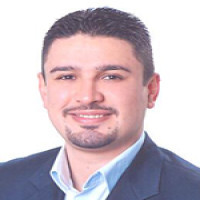

 0000-0002-2241-789X
0000-0002-2241-789X

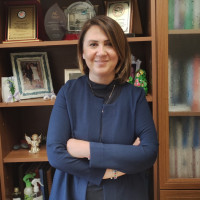


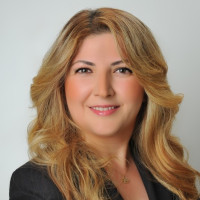
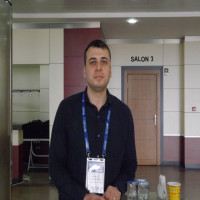

 0000-0002-7311-862X
0000-0002-7311-862X
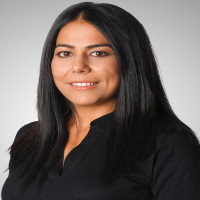
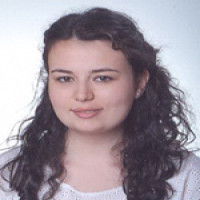
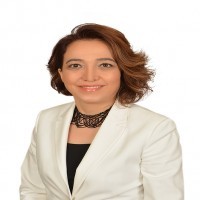


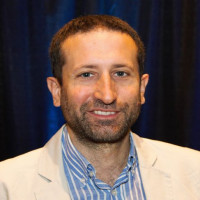





 0000-0003-4558-5068
0000-0003-4558-5068

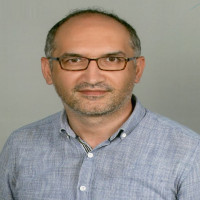
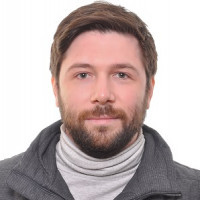
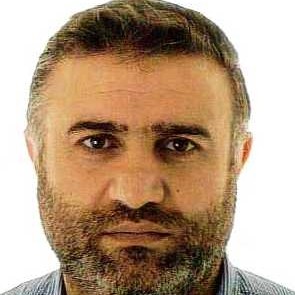

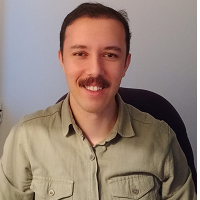
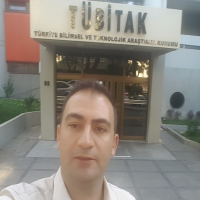

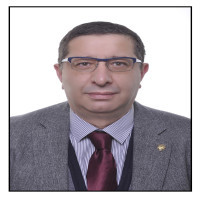

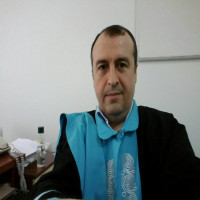



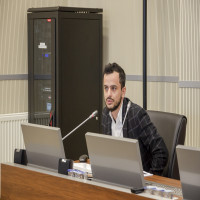
 0000-0001-6305-5349
0000-0001-6305-5349

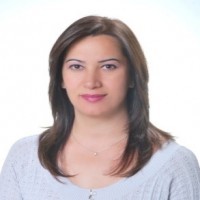

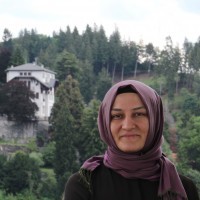
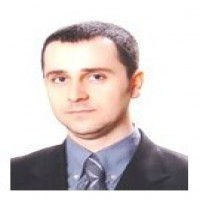
Bu eser Creative Commons Atıf-Ticari Olmayan 4.0 Uluslararası Lisans kapsamında lisanslanmıştır .

